MEDIA FOR CHANGE NETWORK
Trees for Global Benefits: “Climate neutral” burgers in Sweden. Starvation in Uganda
Published
2 years agoon
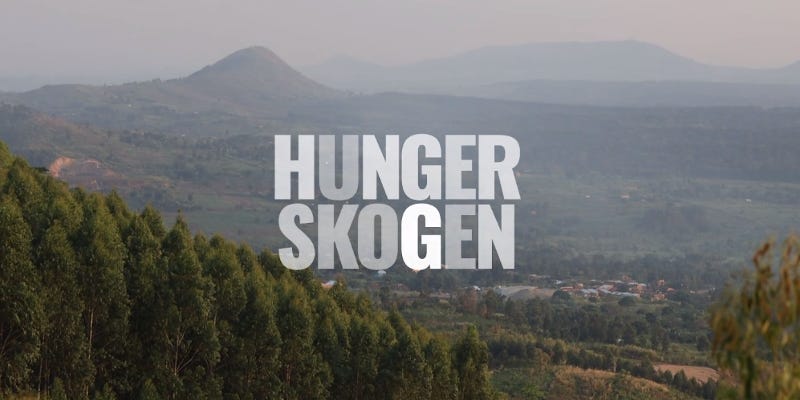
The Swedish fast food chain Max Burgers AB claims to have had more than three million trees planted in the tropics. “Planting trees is an effective way to remove carbon dioxide,” the company states on its website. “Since 2018, MAX has been funding trees that capture the equivalent of 110% of our entire value chain’s greenhouse gas emissions.”
But a new investigation by Staffan Lindberg in the Swedish newspaper Aftonbladet reveals that some of the farmers in Uganda who planted trees for Max Burgers carbon credits are now cutting down the trees and making them into charcoal. The farmers faced starvation, because the trees were planted on their farmland.
Max Burgers buys carbon credits from a project in Uganda called Trees for Global Benefits, that has been running since 2003. The project is managed by a Ugandan organisation called Ecotrust.
Under the scheme, farmers plant trees on their land and receive income from the sales of carbon credits. It is certified under the Plan Vivo standard.
According to the Plan Vivo website,
The project operates as a market-based solution that reduces unsustainable exploitation of forest resources and the decline of ecosystem quality, while diversifying and increasing incomes for rural farmers and their families.
In 2013, the project won an award from SEED, which was founded by UNEP, UNDP, and IUCN. In a video produced by SEED, Pauline Nantongo Kalunda, the executive director of Ecotrust, says, “The main objective of this enterprise is to combine carbon sequestration activity with livelihoods improvements.”
Kalunda is on the Board of Trustees of Plan Vivo.
The hunger forest
Lindberg calls the Ecotrust project the “hunger forest”. Ecotrust persuaded farmers to plant trees on land where they grew crops. But the farmers had only small areas of land. When the trees took over the land, the farmers could no longer grow food for their families.
The Aftonbladet investigation is not the first critique of the Trees for Global Benefits project. In 2017, Elina Andersson and Wim Carton from Lund University wrote a study that highlights problems with the project. “Our study shows that there is widespread confusion among farmers about what the project is basically about,” Andersson and Carton write.
Farmers did not know who was buying the carbon credits.
One farmer said,
They do not have many benefits, these carbon trees. They are not easily grown and they take time. I had to replace so many of them because they dried out. They started to dry from the top and then they refused to grow. I wouldn’t plant these trees again, but rather eucalyptus and maybe some fruit trees.
Farmers had to pay the full cost of replacing damaged and dead trees, regardless of whether the trees were damaged by fire, vandalism, insects, or wild animals.
Andersson and Carton write about the “flawed basis on which the local population had the opportunity to make informed decisions regarding participation” in the tree planting project.
Contracts were written in English which few of the villagers speak.
Almost all the farmers they spoke to said they did not know how much compensation they would receive from the project. One farmer told Andersson and Carton that,
People planted trees before they knew how much they would get. And they did not negotiate the price with the buyers. So they don’t know if they got all their money, or if they just got half of it. If you tell prices in terms of percentage, how can an old man understand? They are not giving the correct information. transparency is lacking. Most people don’t even know what they are selling.
Lack of land is a major problem in the project area, Andersson and Carton note, particularly among the poorest households.
“It cannot be ruled out that,” they write, “through the project, poor small farmers risk being locked into a type of land use for a long time that reduces their ability to adapt to deal with temporary crises as well as long-term changes, which in the worst case can mean long-term negative effects on their life situation.”
They also note that payments from Ecotrust are often greatly delayed or not received at all.
In 2019, an article in the Swedish newspaper Dagens Nyheter took a critical look at the Trees for Global Benefits project.
And in 2022, Global Forest Coalition published a report about the project with the title, “A case study on the failures of carbon offsetting”. The researchers spoke to more than 100 community members. They write that,
The clear message from all communities was that the project was not delivering its promised benefits, and participants were growing increasingly bitter and desperate.
The lead author of the report was David Kureeba, a programme officer with Friends of the Earth Uganda.
The report concludes that the Trees for Global Benefits project “is one of a growing number of global greenwashing exercises that are not only failing to reduce the amount of carbon being released into the atmosphere but also inflicting adverse environmental, social, and economic impacts on the local communities involved”.
“A chance to earn money”
Aftenbladet’s journalist Staffan Lindberg and photographer Niclas Hammarström travel to the project area in Uganda. There they find farmers cutting down the trees, to sell them as charcoal.
A farmer called Samuel Byarugaba tells Lindberg that a man from Ecotrust turned up eight years ago. He said Ecotrust could offer the family a chance to earn money.
Samuel signed the contract despite having only two acres of land, and the fact that all his land was being used to grow food. He didn’t receive a copy of the contract. The man from Ecotrust later showed him how to plant the trees, seven metres apart. That was the only education he received about tree planting.
After three years, the trees formed a canopy over the food crops. The trees took the light, the water, and the nutrients. Samuel’s sweet potatoes and bananas died. Nothing could grow under the trees. Samuel, his wife, and 15 children and grandchildren were without food.
He tells Lindberg,
“I used to be something called a model farmer. People came to me to learn about farming and I was proud to show our farm. We had enough food to eat our fill and were able to sell the excess. Now everything disappeared.”
The first payment from Ecotrust should have come in the first year. When it arrived, one year later, it was equivalent to a little more than US$100. Enough for a couple of weeks of food.
Samuel has only received two more payments of the same amount since then. He has been forced to beg from relatives for his family to survive.
Lindberg reports that now he’s cutting all the trees down. He will plant bananas and sweet potatoes again.
“My children have no food”
Rosset Kyampaire is a widow, and mother of four. She has only one acre of land. Ecotrust still persuaded her to sign the contract.
She planted 200 trees on her land. After two years, the beans and cassava withered. After three years, she had no harvest at all.
After eight years, she has received no money from Ecotrust. Instead she got excuses: “This is how white people work,” and “Have patience,” and “It will arrive later this year.”
To survive, she has to work as a day labourer on other people’s farms. She earns less than US$1.5 a day. It’s not enough.
“I am so stressed,” Rosset tells Lindberg. “My children have no food.”
She has already started cutting down the trees. “It’s my only chance,” she says.
Where is the food? Look around, where is it?
Jorum Baslina is a local leader in the village of Kigaaga. He also joined the project. “Ecotrust just wants to grow as many trees as possible,” he tells Lindberg. “They urge us: plant more!”
Jorum says there is no transparency. Ecotrust did not tell the farmers how much they would receive, or why the money has not been paid. He shows Lindberg a contract, written in English, and says that,
Many here can barely write their own names. And almost no one knows English. Why don’t we get the agreement in our own language? And why doesn’t it say how much we should get?
Jorum has acted as a spokesperson for other people involved in Ecotrust’s project. He says that of the 100 farmers he’s in contact with, only six or seven are happy with the project and they had unused land to plant on and were the first to join.
“The rest of us are much poorer than before,” Jorum tells Lindberg. “Almost everyone has started cutting down the trees or is planning to do so. Where is the food? Look around, where is it?”
“We are starving”
Ecotrust came to Herbert Rukundo’s farm nine years ago and promised that the trees would bring money, every year. Herbert tells Lindberg that,
We dreamed of being able to keep the children in school and maybe rebuild the house a little so that it was beautiful, even buying a motorcycle to drive to church. Instead we were forced to starve. Now we’ve chopped it all down and turned it into charcoal.
Last year, Herbert cut down all his trees. Not long afterwards, the coordinator from Ecotrust visited his farm and accused Herbert of breach of contract. The Ecotrust coordinator threatened that if Herbert did not replant all the trees he would have to face the police and prison.
Hubert replied that as things are, “We are starving.”
Hubert tells Lindberg that Ecotrust didn’t want to listen. “Now I can’t sleep at night,” he says.
Mauda Twinomngisha wanted to send her three daughters to university. “I wanted them to have a better life than me and my husband had. It was for their future that we signed up,” she tells Lindberg.
But when the food disappeared, she had to take the girls out of school. All three have been married off as child brides, aged 14, 15, and 16.
Two years ago, Mauda decided to cut down the trees. “Then a woman from Ecotrust came here,” she tells Lindberg. The woman was very angry. She told Mauda to remove her bananas and plant trees. “But we had no choice,” Mauda says.
Wilson Akiiza and Violet Mbabaazi planted 600 trees on their three acres of land. “Now we have no food”, Wilson tells Lindberg. “Ecotrust never explained how much money I would get, only that it would come every year. Now I am the coordinator for 89 farmers who are part of the project. Nobody has food.”
Robert Sunday has also cut down all his Ecotrust “carbon trees” and made charcoal with them. With the money from the charcoal, he will buy cassava plants.
In the 10 years since he planted the trees, he received two payments, of about US$50 each.
He has only one acre, from which he used to feed 10 people. “Ecotrust must have understood that the family would never make it,” Lindberg writes. “Nevertheless, they were pushed to plant.”
Auditor: “Food security not an issue”
Aftonbladet’s research team visited nine farms in two districts, Hoima and Kikuube. All of them planted trees for Ecotrust on land that they previously used for growing crops. Hunger was the result.
One family received no money at all. All of the others received fewer payments than the contract promised. Ecotrust has not explained to any of them why the money has not been paid out.
None of the nine families has received enough money to cover the cost of food lost to the “carbon trees”.
None of the families could explain how carbon trading works, who bought the carbon credits, or how much money they should have received. Most of them did not receive a copy of the contract they signed.
Two of the families told Lindberg that they were forced to marry off underage daughters.
One eight of the farms, all or some of the trees have now been cut down to make way for food crops. The timber has been sold as charcoal.
Lindberg acknowledges that the Aftonbladet research is not comprehensive. Several thousand farmers are involved in the project, spread over a large area.
But David Kureeba, the lead author of Global Forest Coalition’s 2022 report about the project, tells Lindberg that the problem is widespread and systemic. “We are 45 million people crowded in Uganda,” Kureeba says, “and the vast majority are already living on the verge of starvation. They have no land to spare.”
The Global Forest Coalition report is based on interviews with more than 100 farmers. That report came out 18 months ago. “Since then the situation has worsened further,” Lindberg writes. “Why haven’t those responsible reacted?”
Under Plan Vivo’s rules, the project has to be inspected every six years. The most recent audit was in 2019, carried out by Environmental Services, Inc, a US-based company.
The lead verifier was Guy Pinjuv, who has since moved on to become Senior Advisor for Carbon and MRV (Measurement, Reporting, and Verification) at Conservation International.
A 2017 article describes Pinjuv’s US$600,000 house that he built in Nevada on a one acre plot of land that he bought for just US$150,000 in 2014. In the article, Pinjuv describes his work:
“If someone wants to slow down deforestation, I’m the guy who goes and checks to make sure they calculated everything correctly. And if there’s a tribe there, I’m the guy who goes and meets the chief and makes sure they’re not planning a revolution . . . that sort of stuff.”
The 2019 Environmental Services audit report states that, “In general food security does not appear to be an issue and project activities are maintaining or increasing food production.” There is no mention of the systemic hunger that, as Lindberg writes, “seems to be integrated into the core of the project”.
“Africa’s poor, who did the least to cause the climate crisis, will pay the price when we have to change,” Lindberg writes.
Lindberg highlights the inequity of the situation. “At Swedish hamburger restaurants, guests order from climate-neutral menus. In the hunger forest, the children wait in vain for food.”
Source: reddmonitor.substack.com
Related posts:
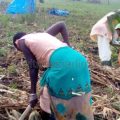
 Uganda is Getting 3 Million New Trees
Uganda is Getting 3 Million New Trees
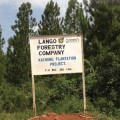 Sweden postpones carbon payment to Uganda tree farm where locals have been evicted
Sweden postpones carbon payment to Uganda tree farm where locals have been evicted
 Uganda reverses forest destruction by inviting in … loggers
Uganda reverses forest destruction by inviting in … loggers
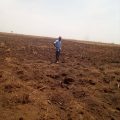 Starvation is rooming in Kiryandongo district as families count losses after missing the seventh planting season consecutively to a multinational.
Starvation is rooming in Kiryandongo district as families count losses after missing the seventh planting season consecutively to a multinational.
You may like
MEDIA FOR CHANGE NETWORK
Seed Sovereignty: Most existing and emerging laws and policies on seeds are endangering seed saving and conservation on the African continent.
Published
2 days agoon
November 11, 2025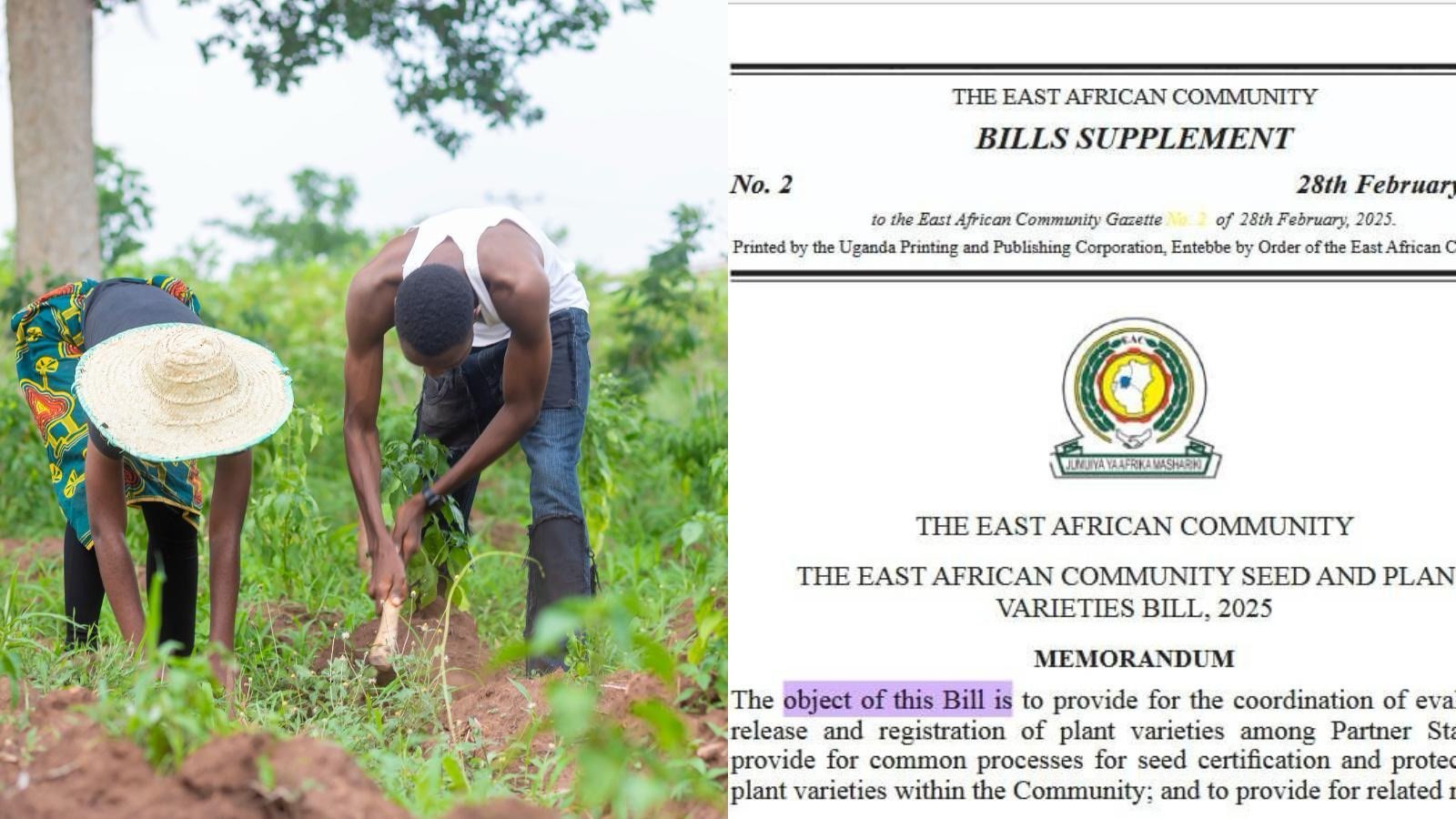
By the Witness Radio team
In Africa, farmers and civil society organizations are urgently warning about the adverse effects of existing policies on agrobiodiversity. These policies aim to erode centuries-old traditions of seed saving and exchange, effectively undermining seed sovereignty and intensifying dependency on commercial seed companies.
The struggle over seed sovereignty, particularly the rights of smallholder farmers, has become one of the most pressing issues for the continent’s agricultural future. As governments introduce new seed laws, such as the proposed East African Seed and Plant Varieties Act Bill of 2024, the preservation of cultural seeds and the rights of smallholder farmers are at stake.
The Communications and Advocacy Officer at Kenya’s Seed Savers Network, Tabitha Munyeri, notes that this has heightened monoculture, thereby significantly reducing the focus on indigenous plant varieties.
“There’s a lot of loss of agrobiodiversity with people focussing on a few foods, a few crops, leaving out so many other essential crops that have sustained humankind for generations and it is also important because it is coming at a time where we are having a lot of also conversations around different seed laws that are coming up for example within the EAC we see that there is the seed and plant varieties bill of 2024 and we are looking at it as a huge setback and there is need for us to create awareness around even the policies that exist.”
She further argues that there is a need to raise awareness and sensitise farmers to the existing policies so that they can understand their effects on agrobiodiversity.
“Even for Kenya we have been having punitive seed laws for the longest time but now we are happy that courts of law are reviewing the law, but we still think that there is need to create a lot of advocacy around the seed laws and what they really mean to farmers because some of them do not understand, some of them are not even interested but once they get to know what it means and the impacts that the laws have on them then they are also able to become more vocal and more involved in the process.” She says.
Farmers in Africa have been the custodians of agricultural biodiversity, developing and maintaining numerous varieties of crops that are suited to local soils and climates. However, over the last few decades, the focus on farming has drastically declined to a handful of “high-yield” crops and imported hybrid varieties, leaving out the diverse indigenous seeds that have sustained communities through droughts, pests, and diseases.
Munyeri warns that this decline in agrobiodiversity is accelerating, driven not merely by market pressures, but by restrictive laws that criminalise and discourage traditional seed-saving practices.
In Kenya, where smallholder farmers supply more than 80 percent of the country’s food, seed systems have long depended on the informal exchange of seeds within communities. Small-hold farmers have relied on these systems to share, adapt, and innovate with seeds suited to their local conditions. However, existing laws have tended to favour the formal sector, requiring seed certification, variety registration, and compliance with intellectual property protections that most small-scale farmers cannot afford.
The 2024 Seed and Plant Varieties Act Bill, currently under discussion in several East African countries, has sparked significant controversy. It seeks to modernize agriculture and align national systems with international standards. However, smallholder farmers and critics contend that it allows corporate control over genetic resources, limiting farmers’ autonomy and threatening biodiversity. Under such a framework, only registered seed varieties can be legally traded or exchanged, effectively outlawing the informal seed networks that have sustained rural communities for centuries.
If smallholder farmers lose their rights to exchange and cultivate indigenous varieties, they may also lose control over their food systems. Dependence on improved seeds necessitates purchasing new stock each planting season, eroding self-reliance and increasing vulnerability to market fluctuations.
This awareness gap is what the Seed Savers Network hopes to address. Through training programs and advocacy initiatives, including its recently concluded regional boot camp, the organization equips participants from across Africa with knowledge about seed laws, biodiversity, and policy engagement.
Related posts:
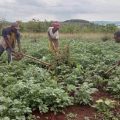
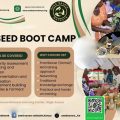 Seed Boot Camp: A struggle to conserve local and indigenous seeds from extinction.
Seed Boot Camp: A struggle to conserve local and indigenous seeds from extinction.
 The EAC Seed & Plant Varieties Bill, 2025, is a potential threat to smallholder farmers, as it aims to disengage them from the agriculture business, according to experts.
The EAC Seed & Plant Varieties Bill, 2025, is a potential threat to smallholder farmers, as it aims to disengage them from the agriculture business, according to experts.
 CSOs and Smallholder farmers are urgently convening to scrutinize the EAC Seed & Plant Varieties Bill, 2025.
CSOs and Smallholder farmers are urgently convening to scrutinize the EAC Seed & Plant Varieties Bill, 2025.
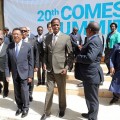 African governments are giving in to corporate pressure and undermining local seed systems – report
African governments are giving in to corporate pressure and undermining local seed systems – report
MEDIA FOR CHANGE NETWORK
Lands ministry rejects call to save over 300 Masaka residents facing eviction
Published
1 week agoon
November 5, 2025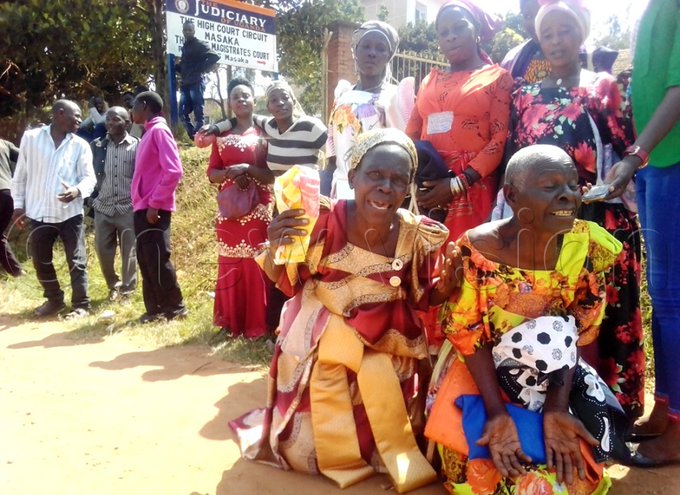
Over 300 families now face displacement, with the landlords’ legal team, Solis Advocates, having served eviction notices in 2021. (Credit: Dismus Buregyeya)
Lands state minister Joseph Mayanja and Minister Judith Nabakoba ruled out further administrative intervention, citing a 2019 court ruling that declared the residents had encroached on land owned by Masaka Jaggery Mills Ltd.
Lands state minister Joseph Mayanja and Minister Judith Nabakoba ruled out further administrative intervention, citing a 2019 court ruling that declared the residents had encroached on land owned by Masaka Jaggery Mills Ltd.The conflict stems from a 2019 ruling by Masaka chief magistrate Deo Ssejjemba, which sided with landlords Joseph Matovu and Methodius Kasujja in their eviction bid against the locals.
The court’s decision, upheld after residents withdrew an appeal in 2021, set the stage for the current standoff.
Despite this, the affected families, many of whom lost homes, crops, and plantations, petitioned the President in 2021, prompting former Vice-President Edward Ssekandi and the State House legal teams to intervene.
However, Mayanja emphasised that all avenues for mediation had been exhausted.
“The matter has been conclusively resolved through legal and administrative processes. No further interventions are justified,” he stated in a letter dated October 28, 2025, rejecting a last-minute plea for a site visit.
Unresolved
Nabakoba confirmed that 105 families received compensation between shillings 300,000 and 12 million from the landlords in 2021 after signing agreements.
However, a ministry report revealed 215 families remain uncompensated, pending verification of their claims.
“We closed the mediation process when the majority accepted the settlement,” Nabakoba said. However, locals like Vincent Mugerwa, leader of the Kasanje Bibanja Owners Association, denounced the payouts as “peanuts,” citing offers as low as shillings 800,000 per acre.
The dispute has drawn high-level attention, including from legislator Joanita Namutawe, who petitioned Parliament, and Prime Minister Robina Nabanja, who met with security officials in Masaka last week. Despite these efforts, the lands ministry insists the case is closed.
Residents, however, contest the land’s ownership history, alleging irregularities in transfers from the original owners, the Masaka Jaggery Mills, to current landlords. Title documents show the land was registered under Freehold Volume 59 Folio 11, transferred to Joseph Bukenya in 2021, before passing to Methodius Kasujja.
Facing eviction
Over 300 families now face displacement, with the landlords’ legal team, Solis Advocates, having served eviction notices in 2021.
The Prime Minister’s office received a fresh petition on October 31, detailing the residents’ grievances, including destroyed property and inadequate compensation.
Original Source: New Vision
Related posts:

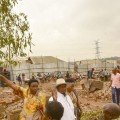 Outcry as Court Orders Eviction of 500 Families in Masaka
Outcry as Court Orders Eviction of 500 Families in Masaka
 Electricity Transmission Company holds titles in Masaka as residents point to foul play
Electricity Transmission Company holds titles in Masaka as residents point to foul play
 Residents in Nakaseke district woke up to eviction notice amid COVID-19 lock-down land eviction directives.
Residents in Nakaseke district woke up to eviction notice amid COVID-19 lock-down land eviction directives.
 Uganda’s top Lands Ministry official has been arrested and charged with Corruption and Abuse of Office, a significant event that will have far-reaching implications for land governance in the country.
Uganda’s top Lands Ministry official has been arrested and charged with Corruption and Abuse of Office, a significant event that will have far-reaching implications for land governance in the country.
MEDIA FOR CHANGE NETWORK
Report reveals ongoing Human Rights Abuses and environmental destruction by the Chinese oil company CNOOC
Published
1 week agoon
November 3, 2025
By Witness Radio team.
Three years into the Kingfisher oil and gas extraction project, the situation in Kikuube District is dire. Despite repeated warnings and criticism from human rights and environmental organizations, the impact on the local population remains intolerable.
In 2024, the Environment Governance Institute Uganda (EGI) and Climate Rights International (CRI) independently published reports on the Kingfisher oil production project. A year later, in September 2025, these two influential organizations united their efforts to produce a follow-up report, which revealed even more alarming results.
The report titled “Extortion, Coercion, and Impoverishment. Human Rights Abuses and Governance Failures in the China National Offshore Oil Corporation’s (CNOOC) Kingfisher Oil and Gas Project” paints a grim picture. It shows that the hardships and abuses faced by residents of the China National Offshore Oil Corporation (CNOOC) Uganda Ltd. are not isolated incidents, but an ongoing series of violations.
Alongside the larger Tilenga project and the East African Crude Oil Pipeline (EACOP), the Kingfisher project is a crucial component of the extensive fossil fuel extraction operation in Uganda, which has been ongoing since 2017. The most important players involved are the French company TotalEnergies, the Tanzania Petroleum Development Corporation (TPDC), the Uganda National Oil Company (UNOC), and the Chinese energy giant CNOOC. While a subsidiary of TotalEnergies is implementing the Tilenga project, CNOOC serves as the executing partner for the Kingfisher project.
Last year’s reports demonstrated the immense environmental damage caused by the Kingfisher project. The Climate Accountability Institute predicted that the entire Ugandan oil production project would increase the country’s emissions. All of the projects will contribute significantly to global warming and, like all new fossil fuel extraction projects, are incompatible with the Paris Agreement’s 1.5 °C warming target.
In Kikuube district, oil drilling activities along the Lake Albert shoreline have allegedly resulted in the demolition of vegetation, increased sediment runoff, and chemical leaks over the last year, leading to the loss of breeding grounds for the local fish population, which is the basis of the livelihood for most local communities. Moreover, visible water pollution is an increasing threat to public health, as the lake is the only available water source for many residents.
Most households in villages bordering the project lack the funds to afford clean water or even medication, as they are experiencing a severe loss of income. Access to the area surrounding the project, including Nsonga, Nsuzu A, Nsuzu B, Kiina, and other nearby villages, is tightly controlled by security forces, like the Counter-Terrorism Police, the regular Traffic Police, and joint UPDF and Saracen Private Security company patrols. These enforce unannounced daily curfews by threatening and beating villagers encountered out of their homes after 6 or 7 pm, which results in a decrease in earnings for street vendors, whose main trading hours are often in the evening.
Fishing and fish trading – the primary sources of employment in the area – are also suffering greatly from the situation controlled by the company. Every two weeks, fishermen are required to pay 200,000 UGX in fishing fees. Fish traders – most of whom are women or youth – also must pay fees for their goods when passing through security checkpoints, which they often cannot afford. None of these fees levied by the security forces are receipted or even explained.
In addition to the physical restrictions, there is the ongoing loss of land. The company continues to take over communal land in the communities, forcibly evicting former residents without compensation.
Violent attacks for non-compliance with the new rules and fees are not uncommon and violate international human rights laws. In addition, there has been a disturbing increase in sexual and gender-based exploitation and abuse towards particularly vulnerable women. Many lose their sources of income due to the changed conditions and are forced into prostitution. The result is an increase in teenage pregnancies and school dropouts.
While the entire oil production project has been repeatedly criticized for human rights violations and illegal evictions, CNOOC’s actions are particularly egregious. Unlike other comparable projects, the company has never published a Resettlement Action Plan (RAP) setting out compensation requirements and plans for restoring livelihoods. However, this is a necessary measure according to Ugandan and international standards. Although CNOOC has officially committed to developing an accessible grievance mechanism for community members, the residents interviewed for the report are not aware of any such mechanism.
Although arbitrary violence and sexual assaults against women have decreased since a new commanding officer of the local Uganda Peoples’ Defense Forces (UPDF) was appointed, restrictive military control over the area and its inhabitants remains oppressive. Even under the new commander, Mubingwa Moses, residents continue to be restricted in their traditional way of life and work by opaque rules. The systematically imposed fees further exacerbate the situation of those affected and can only be described as exploitation.
The report by EGI and CRI makes a fundamental demand: “Uganda’s oil development is perpetuating climate, environmental, and human rights harms in violation of both national and international law and should be discontinued”. Furthermore, it explains in detail what is specifically needed to change the situation for those affected. The demands include conducting an independent and transparent investigation into the documented human rights violations, environmental degradation, and socio-economic impacts.
An independent body should examine all activities and suspend them until the situation is resolved. The primary demand is to ensure reparations and corporate accountability. CNOOC is expected to adopt a strict zero-tolerance policy regarding human rights violations, violence, and corruption, and to provide accessible and effective grievance procedures and compensation for those affected. In this regard, an appeal is made in particular to state and international institutions to monitor and enforce the promises made by the company.
Related posts:

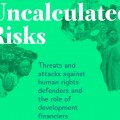 Development financiers fuel human rights abuses – New Report
Development financiers fuel human rights abuses – New Report
 StopEACOP Coalition warns TotalEnergies and CNOOC investors of escalating ‘financial and reputational’ Risks
StopEACOP Coalition warns TotalEnergies and CNOOC investors of escalating ‘financial and reputational’ Risks
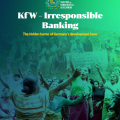 A German Bank is under intense scrutiny for its irresponsible banking practices, which have been directly linked to displacement and human rights abuses.
A German Bank is under intense scrutiny for its irresponsible banking practices, which have been directly linked to displacement and human rights abuses.
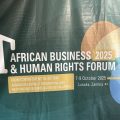 The 4th African Forum on Business and Human Rights: The rapidly escalating investment in Africa is urgently eroding environmental conservation and disregarding the dignity, the land, and human rights of the African people.
The 4th African Forum on Business and Human Rights: The rapidly escalating investment in Africa is urgently eroding environmental conservation and disregarding the dignity, the land, and human rights of the African people.

Discover How Foreign Interests and Resource Extraction Continue to Drive Congo’s Crisis

Seed Sovereignty: Most existing and emerging laws and policies on seeds are endangering seed saving and conservation on the African continent.

Lands ministry rejects call to save over 300 Masaka residents facing eviction

Report reveals ongoing Human Rights Abuses and environmental destruction by the Chinese oil company CNOOC

StopEACOP Coalition warns TotalEnergies and CNOOC investors of escalating ‘financial and reputational’ Risks

Oil palm tree growing in Uganda: The National Oil Palm Project is threatening to evict hundreds of smallholder farmers to expand its operations.

New! The Eyes on a Just Energy Transition in Africa Program is now live on Witness Radio.

Know Your Land rights and environmental protection laws: a case of a refreshed radio program transferring legal knowledge to local and indigenous communities to protect their land and the environment at Witness Radio.

Innovative Finance from Canada projects positive impact on local communities.
Over 5000 Indigenous Communities evicted in Kiryandongo District
Petition To Land Inquiry Commission Over Human Rights In Kiryandongo District
Invisible victims of Uganda Land Grabs
Resource Center
- REPARATORY AND CLIMATE JUSTICE MUST BE AT THE CORE OF COP30, SAY GLOBAL LEADERS AND MOVEMENTS
- LAND GRABS AT GUNPOINT REPORT IN KIRYANDONGO DISTRICT
- THOSE OIL LIARS! THEY DESTROYED MY BUSINESS!
- RESEARCH BRIEF -TOURISM POTENTIAL OF GREATER MASAKA -MARCH 2025
- The Mouila Declaration of the Informal Alliance against the Expansion of Industrial Monocultures
- FORCED LAND EVICTIONS IN UGANDA TRENDS RIGHTS OF DEFENDERS IMPACT AND CALL FOR ACTION
- 12 KEY DEMANDS FROM CSOS TO WORLD LEADERS AT THE OPENING OF COP16 IN SAUDI ARABIA
- PRESENDIANTIAL DIRECTIVE BANNING ALL LAND EVICTIONS IN UGANDA
Legal Framework
READ BY CATEGORY
Newsletter
Trending
-
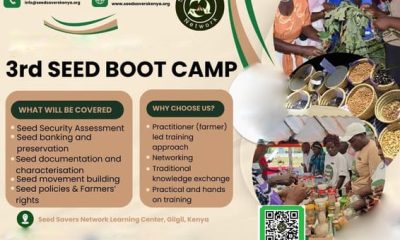
 MEDIA FOR CHANGE NETWORK2 weeks ago
MEDIA FOR CHANGE NETWORK2 weeks agoSeed Boot Camp: A struggle to conserve local and indigenous seeds from extinction.
-

 MEDIA FOR CHANGE NETWORK1 week ago
MEDIA FOR CHANGE NETWORK1 week agoReport reveals ongoing Human Rights Abuses and environmental destruction by the Chinese oil company CNOOC
-

 SPECIAL REPORTS AND PROJECTS1 week ago
SPECIAL REPORTS AND PROJECTS1 week agoThe Environmental Crisis Is a Capitalist Crisis
-
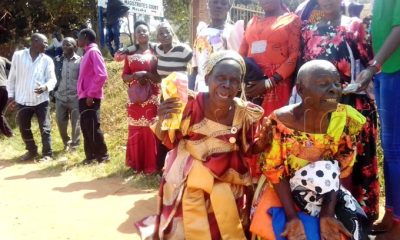
 MEDIA FOR CHANGE NETWORK1 week ago
MEDIA FOR CHANGE NETWORK1 week agoLands ministry rejects call to save over 300 Masaka residents facing eviction
-

 SPECIAL REPORTS AND PROJECTS1 week ago
SPECIAL REPORTS AND PROJECTS1 week agoGlobal use of coal hit record high in 2024
-
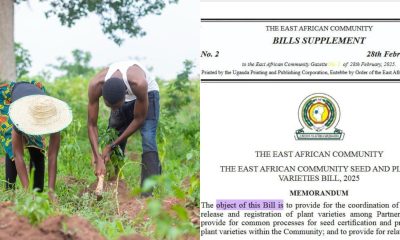
 MEDIA FOR CHANGE NETWORK2 days ago
MEDIA FOR CHANGE NETWORK2 days agoSeed Sovereignty: Most existing and emerging laws and policies on seeds are endangering seed saving and conservation on the African continent.
-
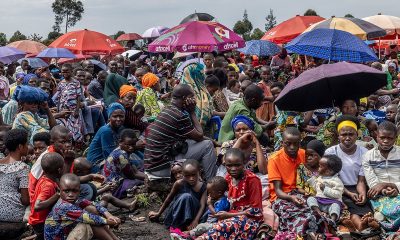
 NGO WORK24 hours ago
NGO WORK24 hours agoDiscover How Foreign Interests and Resource Extraction Continue to Drive Congo’s Crisis

